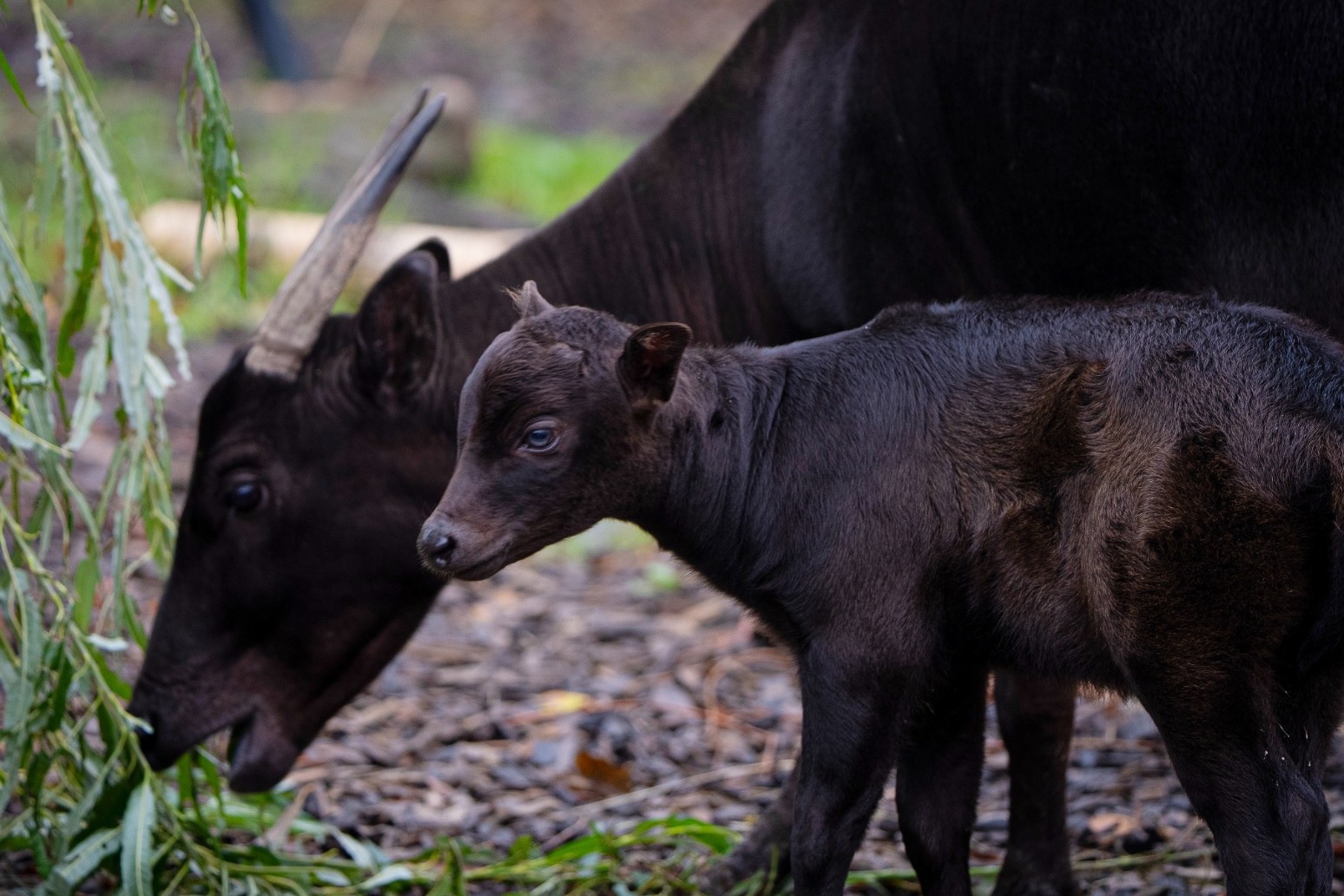
The birth of a rare calf said to be the smallest species of wild cattle was captured on video at Chester Zoo.
A female anoa, named Kasimbar, was delivered by her mother Darcy following a 10-month pregnancy and the birth was recorded on hidden cameras located in their den.
The video is believed to be the first recorded footage of an anoa birth, according to the conservation zoo.
Moments after Darcy gave birth, the video shows her calf stumbling as she took her first steps and explored the world outside her den for the first time.
Callum Garner, a keeper at Chester Zoo, said he feels “privileged” to share the rare footage with the public and hopes the video can help conservationists gain better knowledge about the animal.
“Very few people, if any, will have ever seen an anoa give birth,” he said.
“Anoa are incredibly shy and elusive animals and so to be able to witness a calf being born and then see those magical first moments between mum and baby is very special indeed. We’re privileged to be able to share this remarkable footage with the world.
“Some of the information we’ve gleaned from the footage may be useful in the conservation breeding of this endangered species in the future.”
He added that Darcy and newborn Kasimbar are recovering well as they bond together in their den and said the calf has “gained confidence and is bursting with energy”.
The anoa is native to the island of Sulawesi in Indonesia and listed by the International Union for the Conservation of Nature (IUCN) as an endangered animal with only an estimated 2,500 left in the wild.
Anoa are known locally as the “demons of the forest” and are often persecuted by farmers because they are believed to use their horns to attack livestock in forests at night, according to zoo conservationists who feel the rare species is “largely misunderstood”.
Mr Garner said the anoa are sometimes hunted for their meat which could contribute to their declining numbers.
However, Chester Zoo has joined 50 international organisations as part of a global project called Action Indonesia which aims to protect Indonesia’s most threatened animals including anoa, banteng, also a rare bovine species, babirusa, a rare swine breed, and the Sumatran tiger.
“Anoa are in real trouble in the wild, owing to them being largely misunderstood and having developed a reputation among local people in Sulawesi that leads them to being persecuted and targeted by farmers,” Mr Garner explained.
“Not only that, but their habitat is ever shrinking and they are hunted for their meat. That’s why we’re working with the Indonesian government and the wider conservation community to protect precious habitats in South East Asia, so that species like the anoa can go on to thrive.”
The project hopes to introduce education programmes while exploring ways of preserving the local habitat and start anti-poaching initiatives to help reduce the decline of anoa.
Published: by Radio NewsHub

